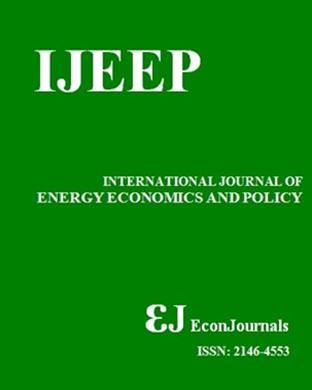The Dynamics of Environmental Resource Productivity: The Role of Economic Growth, Trade Openness, FDI, and Urbanization in China
DOI:
https://doi.org/10.32479/ijeep.19736Keywords:
Environmental Resource Productivity, Economic Growth, Trade Openness, FDI, UrbanizationAbstract
A research investigation uses Chinese provincial data from 2000 until 2024 to assess the environmental resource productivity (ERP) effects involving economic growth and trade openness alongside foreign direct investment (FDI) and urbanization. A composite measure for environmental resource productivity emerges through application of principal component analysis (PCA) among three key factors which are energy efficiency and material productivity combined with carbon emissions. Analysis using PARDL models demonstrates that investments from FDI together with GDP increases show a negative effect on ERP thus indicating that economic growth and foreign capital do not necessarily support better environmental outcomes. Both urban development patterns and increased trading links show positive relationships with ERP because they promote sustainable resource utilization methods. The co-integration test shows Shanghai along with Beijing Jiangsu Zhejiang Sichuan Henan Shandong follow a shape towards lasting balance however Guangdong moves apart demonstrating poor integration of its environmental and economic structures. FDI requires specific policy interventions which will help sustainability and support economic growth results that incorporate efficient resource usage. Policy makers need to establish tight environmental risk evaluation tools for FDI projects while adopting environmentally friendly trade policies and smart city development methods to create more effective ERP. Special policies must be designed to achieve economic realignment through industrial restructuring and regulatory improvements because Guangdong Province demonstrates distinctive patterns. This research delivers quantitative data to assist authorities in making choices about economic development versus environmental preservation so they can create sustainable development plans for all Chinese provinces.Downloads
Published
2025-06-25
How to Cite
Hadili , A., Nasim, I., Boukhris, M., Bashir, F., Haider, S. A., & Munir, F. (2025). The Dynamics of Environmental Resource Productivity: The Role of Economic Growth, Trade Openness, FDI, and Urbanization in China. International Journal of Energy Economics and Policy, 15(4), 616–623. https://doi.org/10.32479/ijeep.19736
Issue
Section
Articles




